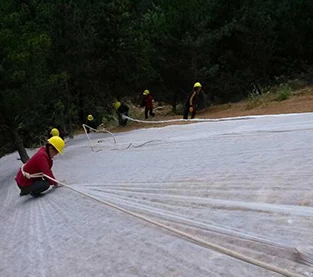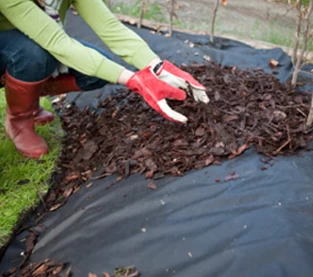Product: ES Material Fiber Nonwoven Fabric For Packaging
Raw Material: PP+PE
Nonwoven Technology: thermal bonded
Dotted Design: dot or plain
Gram: 25 gsm - 30 gsm
Color: White
Specification: custom
Sample: Can be provided without charge, freight to be collect
Applications:
Medical(20-60gsm): face masks,diapers,bed sheets,curtains,pillow covers,sanitary,etc
Packaging(25-30gsm): tea bag, coffee bag/filter paper, dust-proof covers.etc
Product: ES Thermal Bonded Non Woven Fabric For Tea Bag
Raw Material: PP+PE
Nonwoven Technology: thermal bonded
Dotted Design: dot or plain
Gram: 25 gsm - 30 gsm
Color: White
Specification: custom
Sample: Can be provided without charge, freight to be collect
Applications:
Medical(20-60gsm): face masks,diapers,bed sheets,curtains,pillow covers,sanitary,etc
Packaging(25-30gsm): tea bag, coffee bag/filter paper, dust-proof covers.etc
Product: Composite Non Woven Paper Desiccant Packaging Material
MOQ: 1000 kg
Material: Composite Non Woven Paper
Specification: Custom sizes.
Design: Welcome custom logo and design. Welcome OEM.
Color: Full Color of CMYK,Pantone Color as customer requirements
Weight: Based on size & material,thickness
Delivery Time: 10-15 days after confirmed the final artwork and order
Product: Desiccant Wrapping Paper
MOQ: 1000 kg
Material: DuPont Material
Specification: Custom sizes.
Design: Welcome custom logo and design. Welcome OEM.
Color: Full Color of CMYK,Pantone Color as customer requirements
Weight: Based on size & material,thickness
Delivery Time: 10-15 days after confirmed the final artwork and order
Product: Bi-component Non Woven Fabric Desiccant Packaging Material
MOQ: 1000 kg
Material: Bi-component Non Woven Fabric
Specification: Custom sizes.
Design: Welcome custom logo and design. Welcome OEM.
Color: Full Color of CMYK,Pantone Color as customer requirements
Weight: Based on size & material,thickness
Delivery Time: 10-15 days after confirmed the final artwork and order
Product: Spunbond Non Woven Fabric Custom Desiccant Packaging Material
MOQ: 1000 kg
Material: Spunbond Non Woven Fabric
Specification: Custom sizes.
Design: Welcome custom logo and design. Welcome OEM.
Color: Full Color of CMYK,Pantone Color as customer requirements
Weight: Based on size & material,thickness
Delivery Time: 10-15 days after confirmed the final artwork and order
1. How to use non-woven fabric(Agriculture Mat On Sales)
(A) Non-woven fabric is spread on the bottom of the pan
a. Advantages
The effect is the same as the gauze net, the seedling tray is not clay when the seedlings are raised, which can improve the seedling efficiency.
b. Disadvantages
(1) When the seedbed is highly viscous or wet, the foot socket cannot be leveled with the floating soil during the pan placement process, which will easily cause the seedling pan to hang in the air, and it is easy to fall dry later.?
(2) Increase costs.
(B) Spread the non-woven fabric(Agricultural Ground Cover Manufacturer) on the tray
After sowing and covering the soil, the non-woven fabric should be laid flat. If the seedbed is covered with double layers, the mulch should be laid on the non-woven fabric.


2. Objective evaluation of non-woven fabrics
(a) Advantages
The life of non-woven fabric is generally 3 years.
1. Breathable function
The non-woven fabric has micropores, which can be naturally ventilated after sowing and before seedling.
2. Moisturizing function
After the rice seedlings emerge, the non-woven fabric(Agriculture Nonwoven Cover Factory) has an obvious moisturizing effect, which will reduce the frequency of watering the seedbed.
3. Warming function
----The highest temperature in the non-woven fabric is 9-12 degrees lower than that of the plastic film, and at the lowest temperature, it is 1-2 degrees lower than the plastic film;
----Non-woven fabrics are not easy to cause the phenomenon of roasting seedlings like mulching film, and the exposing time is relatively wide.
4. Water permeability
----Peasant households who applied the strong seedling agent should spread non-woven cloth before watering to prevent the strong seedling agent from shifting and cause burning buds.
----After sowing and before seedlings, if the seedbed is short of water, spread the non-woven fabric during the watering process to prevent the scouring of the soil from causing the seed to appear.
5. Convenient pre-emergence operation
----Before removing the non-woven fabric and after emergence, if the top cover is found, lightly press the seedbed with the roller so that the roller does not touch the bed soil.
----In the process of uncovering, it is easier to operate. After the plastic film is soaked in water, it is not easy to spread.
(b) Disadvantages
1. It is not convenient for post-emergence management
The non-woven fabric has been uncovered too late or has been spread on the seedlings, and the seedlings under the non-woven fabric cannot be seen, and no countermeasures can be taken.
2. The light transmittance is slightly different
After emergence, if the non-woven fabric is not removed in time, it will affect the light to some extent. The longer the covering time, the greater the impact. Therefore, it is generally not recommended to always spread on the seedlings.
The experiment showed that the light transmittance of the plastic film in the dry nursery bed was 76%, and the non-woven fabric was 63%, the difference was not significant.
3. Difference in warming performance
Tests have shown that the minimum temperature of non-woven fabric is 1-2 degrees lower than that of plastic film, and its heating performance is not as good as that of plastic film.